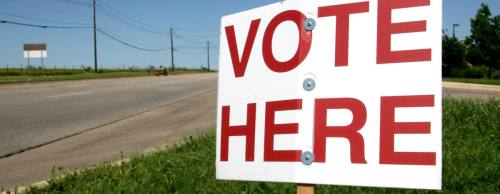Posted 9:10 p.m.
With unofficial voting results tallied, Proposition 1 on Jersey Village ballots has failed with 35 percent of the vote, and Proposition 2 has passed with 65 percent of the vote.
With voter approval, Proposition 1 would have banned the city from ever installing future red light camera programs. Proposition 2, with approval, allows the city to continue its existing red light camera program with American Traffic Solutions in the event that cameras were banned through Proposition 1.
"Some voters supported us because they agreed with the safety aspect, and some didn't like the fact that this altered the city's charter and took authority way from city council," said Rod Erskine, a resident and former city council member in Jersey Village who along with another former city council member, Curtis Haverty, advocated against Proposition 1. "Very few who signed the petition were given complete information on the proposition's impact, and the voters have now sent a clear message to council."
Proposition 1 earned a total of 366 "yes" votes and 675 "no" votes. Proposition 2 earned 676 "yes" votes and 364 "no" votes. A total of 1,061 ballots were cast.
No red light cameras are currently installed in Jersey Village, and no plans are in place to have any installed. However, the city’s contract with ATS runs through 2024, and cameras can be installed and used through the end of that contact. The contract with ATS began Aug. 20, 2007, and City Council adopted a 15-year extension on May 28, 2009.
To permanently ban red light cameras and immediately cut off the current contract, voters would have needed t0 approve Proposition 1 and reject Proposition 2.
The propositions were added to the ballot as the result of a petition to ban red light cameras that was presented to Jersey Village Secretary Lori Coody before the Jan. 18 city council meeting. The petition garnered 439 signatures from Jersey Village residents, surpassing the necessary amount required by Texas law—at least 5 percent of current voters—to qualify as a legally binding.
Cameras were installed at 10 locations along the Hwy. 290 frontage road in 2008. The Texas Department of Transportation instructed the city to remove seven cameras in April 2013 to accommodate the Hwy. 290 expansion project. The final three were removed in November 2013. No cameras have been installed since that point.
Proposition 2 was added to the ballot to give voters the ability to ban future red light camera programs without forcing the city to end its current program with ATS and face a possible six-figure settlement for breach of contract, Ray said.
Curtis Haverty, a Jersey Village resident and local emergency medical technician and first responder, said there is a clear correlation between red light cameras and a decrease in car crashes and injuries in Jersey Village.
Data obtained from the Jersey Village Police Department shows 48 crashes occurred at seven red light camera intersections before the cameras were installed. The number of crashes fell to 22 in 2010 and hit a low point of 17 in 2013, the year the cameras were removed. Total crashes rose to 28 in 2014 and 38 in 2015.
When the cameras were operational, the money they raised was split between Jersey Village, ATS and the State of Texas. During the 2008-09 fiscal year, the cameras generated about $2 million in revenue, roughly $600,000 of which went to Jersey Village. Revenue reached a peak in the 2011-12 fiscal year when around $3 million was raised with around $1.2 million going to the city.
All results are unofficial until canvassed.





